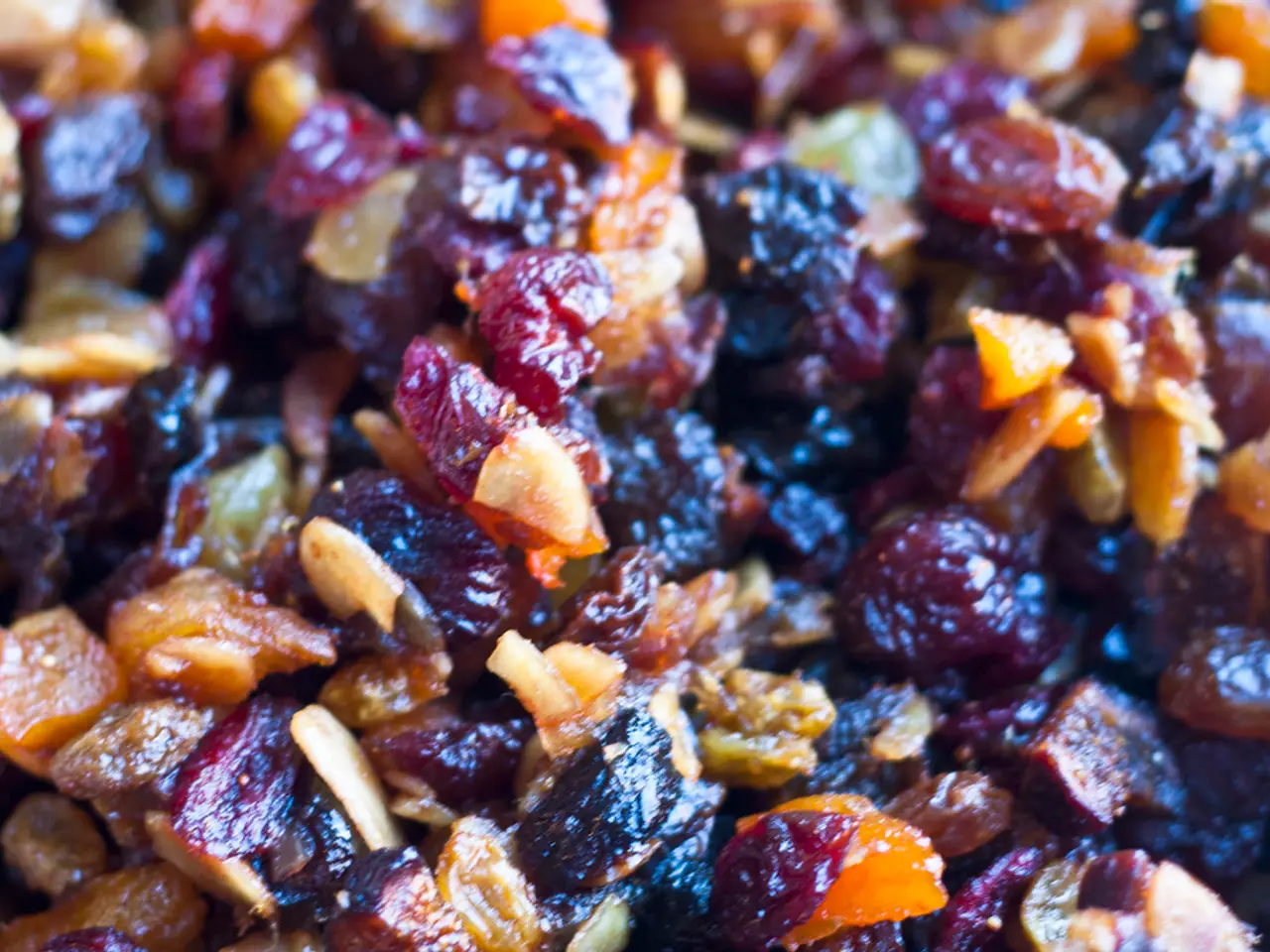A comprehensive guide to nutritious eating: suggestions and insights
## Balanced Diet: Key to a Healthy Lifestyle
Adopting a balanced and nutritious diet is crucial for maintaining good health, supporting bodily functions, and preventing chronic diseases. A well-rounded diet should include a variety of foods from all major food groups, be mindful of portion sizes, and consider the quality of foods selected.
## Major Food Groups to Focus On
1. **Fruits & Vegetables**: Aim for at least five portions daily, with more (7–8 portions/day) providing extra fiber, vitamins, and minerals. Fresh, frozen, or canned (without added sugar or salt) options are recommended.
2. **Grains/Carbohydrates**: Choose whole grains like brown rice, quinoa, and whole wheat, as well as potatoes, bread, and pasta. Aim for 50–60% of daily calories from these sources, preferably whole grain and high-fiber options.
3. **Proteins**: Include lean meats, poultry, fish, eggs, beans, lentils, tofu, nuts, seeds, and plant-based proteins in your diet. Limit processed meats, and make sure to include plant sources. Aim for 10–15% of daily calories from protein.
4. **Dairy/Dairy Alternatives**: Choose low-fat milk, yogurt, cheese, and fortified plant milks. Choose low-fat versions where possible.
5. **Fats**: Opt for unsaturated fats like olive oil, avocado, nuts, seeds, and limit saturated and trans fats. Aim for 20–30% of daily calories from fats.
## Portion Size Guidelines
- **Fruit**: One medium apple, banana, or orange; one cup chopped; 150ml fruit juice (limit due to sugar). - **Vegetables**: One cup raw leafy greens; half a cup other vegetables. - **Grains**: Half a cup cooked rice/pasta; one slice bread; one cup breakfast cereal. - **Protein**: 65g cooked lean meat; 80g poultry; 100g fish; two eggs; one cup cooked legumes. - **Dairy**: One cup (250ml) milk; one cup yogurt (200g); two slices cheese; half a cup ricotta. - **Healthy Fats**: One to two teaspoons oil (e.g., olive, canola); one tablespoon avocado; one to two teaspoons nut/seed paste.
## Tips for Healthy Eating
1. **Variety**: Eat a wide range of foods from each group to ensure a full spectrum of nutrients. 2. **Whole Foods**: Choose whole, minimally processed foods over refined or ultra-processed options. 3. **Limit Added Sugars & Salt**: Reduce intake of sugary drinks, snacks, and processed foods high in salt and sugar. 4. **Healthy Cooking Methods**: Prefer grilling, steaming, or baking over frying. 5. **Hydration**: Drink plenty of water; limit sugary drinks. 6. **Mindful Eating**: Pay attention to hunger and fullness cues to avoid overeating. 7. **Physical Activity**: Combine a balanced diet with regular exercise for optimal health.
## Special Considerations
1. **For Children**: Start with exclusive breastfeeding for six months, then introduce diverse, nutrient-dense foods; continue breastfeeding up to two years and beyond where possible. 2. **For Pregnant Women**: Focus on nutrient-rich foods to support maternal and fetal health. 3. **For Older Adults**: Ensure adequate protein, calcium, and vitamin D; stay hydrated and maintain fiber intake.
## Summary Table: Daily Food Group Targets
| Food Group | Suggested Daily Servings (Teens 14–18) | Portion Examples | |--------------------|----------------------------------------|-------------------------------| | Fruits | 2 | 1 medium fruit, 1 cup chopped | | Vegetables | 5–5.5 | 1 cup leafy, ½ cup others | | Grains | 7 | ½ cup cooked rice/pasta | | Proteins | 2.5 | 65g meat, 2 eggs, 1 cup beans | | Dairy/Alternatives | 3.5 | 1 cup milk, 2 slices cheese | | Healthy Fats | 2 | 1–2 tsp oil, 1 tbsp avocado |
A balanced diet is not about strict restrictions but about ensuring variety, portion control, and food quality across all groups, supported by a lifestyle that includes regular physical activity. Managing portion size is an important tip for a healthy diet, as people of different ages, sexes, and activity levels need different amounts of food. Fresh foods are more likely to be "nutrient-rich," while processed foods are often "energy-rich" from added fats and sugars. Fats are an essential part of a healthy diet, necessary for cell growth and development, energy, absorption of certain vitamins, and hormone development, among other functions. Ultra-processed foods make up a significant portion of calories consumed in the United States, and consuming a high proportion of such foods can increase the risk of heart disease and diabetes. The AHA recommends replacing foods high in saturated fats with unsaturated fats to lower cholesterol and reduce heart disease risk. Processed foods not only contain added ingredients, including dyes and preservatives, but the processing itself can destroy or remove nutrients, such as fiber and vitamins. Dairy products can be excellent sources of calcium, promoting healthy bones and teeth, and also contain other nutrients such as potassium, vitamin D, magnesium, zinc, and protein. Whole grains are products made from the entire grain and retain more dietary fiber, vitamins, and minerals than refined grains.
- Various types of healthy diets, such as balanced nutrition and low-calorie diets, can aid in weight management and overall health.
- Science recognizes the importance of eating a variety of foods to obtain different types of dietary nutrients essential for health-and-wellness, fitness-and-exercise, and food-and-food-benefits.
- A balanced diet should include a variety of foods from groups like fruits, vegetables, grains, proteins, dairy, and healthy fats, according to diet-types research.
- Calcium, an essential nutrient for bone health, is found in dairy and dairy alternatives, making them important additions to a nutritious diet.
- Eating healthy and minding portion sizes can help ensure that you receive the necessary nutrition and avoid excessive calorie intake, thereby supporting a healthy lifestyle.
- A well-planned healthy diet involves not only paying attention to the food consumed but also considering physical activity for optimal health-benefits.
- While ultra-processed foods are often rich in energy from added fats and sugars, fresh foods tend to be more nutrient-rich, making them a better choice for maintaining long-term well-being.




